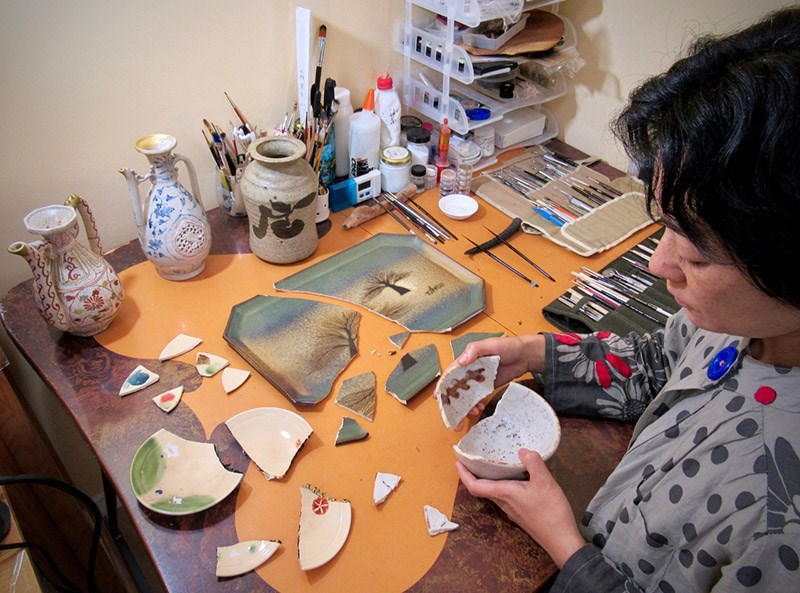If you’ve ever dropped a favourite plate or wearily attempted to glue together a shattered vase, you’ll appreciate the saving grace of kintsugi. The Japanese art of golden joinery is a 500-year-old traditional method of restoring damaged ceramics with gold, no less.
Instead of discarding the broken, it enhances their beauty and value by celebrating imperfection and even impermanence.
In 2018, artist Naoko Fukumaru moved to Powell River and opened a ceramic and glass restoration studio in Wildwood, where she regularly brings new life and even greater beauty to the once broken through kintsugi.
Using a special Asian tree sap to mend, gold powder is dusted on to highlight, instead of hide, restorations.
“[The] transformative spirit of kintsugi has an emotional impact on people that echoes within, helping us to recognize and process and release our own internal pressures and experiences,” says Naoko. Through her work, she aims to open people and “help them discover for themselves how to be beautifully broken.”
The art form of kintsugi brings with it a powerful philosophy: the broken can be mended and we can even learn to value the cracks in all things.
This art form is a fitting symbol for human resilience in the face of our personal histories and traumas. Our endurance through challenge can be celebrated as being vital to forming our identity – what makes us who we are.
Even when broken, our lives can be rebuilt and we can forge back together with compassion, patience and self-awareness. This perspective seems especially true as we navigate the impacts of a global pandemic and devastating fires to the south.
As we face unprecedented times and some experience extreme losses, what is the golden sap piecing us back together? How are we becoming more resilient, tapped into community and aware of what is truly important?
This same turn of perspective can be applied to the treasured objects that come into our lives. Once they lose their shine, how do we perceive them? We may be tempted to toss the chipped, torn, worn, scratched and stained instead of giving them a little attention that will revitalize.
Wabi-sabi is the Japanese tree of philosophy that the art of kintsugi branches out from. Valuing the transient, and acknowledging that perfection is a myth, wabi-sabi lends our gaze to the tarnished parts of life overall, including our material possessions.
Upcycling is a kind of modern take on wabi-sabi as it elevates damaged goods. More and more of us are seeing the wisdom and heart found in breathing life into what would have been discarded. Prematurely tossing items that simply need a little mending can save us money and offer the opportunity to infuse our personal stamp onto our things.
As we tuck into the bending light of fall, maybe you’ll find yourself sewing on patches, sanding down a dresser, reenvisioning a broken rake into a wine-glass holder, or even piecing together shards of pottery. In so doing comes the embracing of the imperfect within all things and also the deeper truth that nothing lasts forever.
May you create beauty from the ashes this season.
For more information about Naoko Fukumaru, go to fukumarurestoration.com/kintsugi.
Let’s Talk Trash is qathet Regional District’s waste-reduction education program. Find out more at LetsTalkTrash.ca, or email [email protected].



